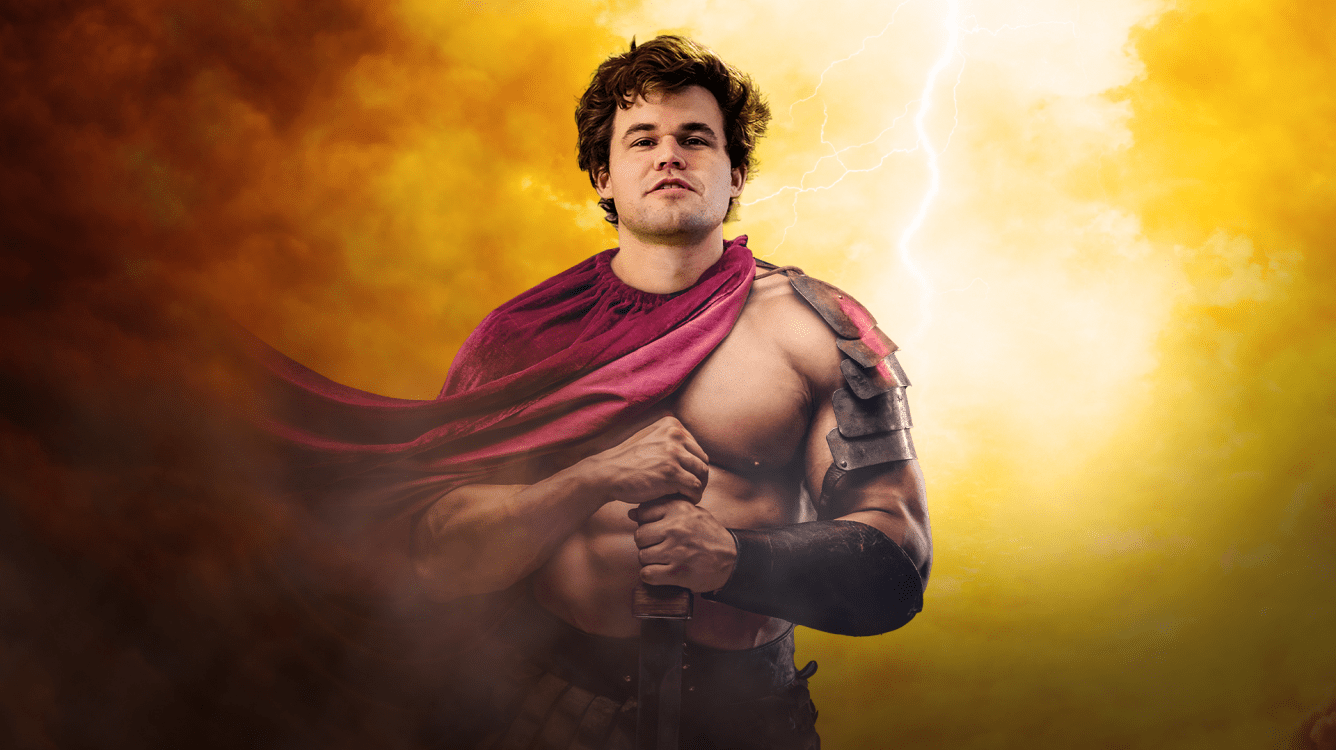
Carlsen's Epic Game
GM Magnus Carlsen has produced hundreds of brilliant games, so when you saw the word "epic" in the title, you probably envisioned one of those sparkling attacks with multiple sacrifices. While this game indeed features many attacks, counterattacks, and sacrifices, the result is a draw!
Why do I call it epic, then? It feels like these days, the word "epic" is quite overused and has lost its original meaning. Traditionally, epic means a long poem describing the courageous deeds of legendary heroes. In most cases, an "epic" is a major piece of historical heritage that sets cultural values.
In my opinion, the game that we are going to analyze today perfectly fits such a description. It was played by two legendary heroes, as I have little doubt about Carlsen's opponent's brilliant future. The game was long and very instructive. Also, in order to understand numerous intricate moments of the game, we'll need some knowledge of chess's historical heritage. I am sure that a chess player of any level, from total beginner to grandmaster, would find something interesting in this game. Let's start our journey!
Black's move 9...g6 might look weird. Why would Black spend a tempo to fianchetto his f8-bishop if it can be developed right away? Isn't wasting time one of the opening's cardinal sins? Well, there is one very important reason in favor of the fianchetto. Look at White's bishop on d3, which is dangerously looking in the direction of Black's kingside. It cannot wait to start an attack against the black king after he castles.
Just like in my previous article, we briefly discussed the Greco attack, where a bishop on d3 is the main hero. By playing 9...g6, Black blocks White's access to the h7-square. Additionally, Bg7 provides more protection to Black's king. This idea became very popular after the following famous game that almost cost me my chess career. You can find the whole story here.
While the idea of adding protection for the king is attractive, it has one negative side-effect: the g6-pawn is an excellent "hook," and so White started pushing forward his h-pawn, as in the next game.
Now, when you know typical ideas of this pattern, it shouldn't come as a surprise that Carlsen also probes the black kingside with his h-pawn:
The next interesting moment happened in the following position when Carlsen missed a simple combination. Can you find it?
If the world champion missed this combination, why do I call it simple? Well, first of all, it doesn't require much calculation, but most importantly, the pattern of sacrificing a knight on f7 in order to pin a bishop on f5 is well-known. For example, it could happen in the following famous game:
The following position is a very good lesson of positional play from GM Praggnanandhaa Rameshbabu. What would you play as Black?
In most cases, it is well worth sacrificing a pawn to get counterplay rather than protect an inferior, passive position! As a result of Praggnanandhaa's creative play, White's pawn on e5 is in grave danger. If Black manages to snatch it for free, he will be better. What should White do?
And now we are getting close to the most exciting part of the game. White is up a rook, but Black is about to promote his pawn. This is the moment of truth: whose strategy will prevail?
The final instructive moment of the game happened in an endgame. Carlsen gave up his extra rook to avoid the perpetual. Moreover, he had to part with a couple of pawns as well. Nevertheless, he kept pushing for a win being two pawns down!
Less experienced players might be surprised. What's going on there? Isn't material advantage a decisive factor in endgames? Indeed, in most cases, when we have a material advantage, we want to trade our pieces to get into an endgame. But queen endgames with far-advanced passed pawns are very tricky, and even extremely strong players make mistakes there. The following game is a very good example. GM Anatoly Karpov's endgame technique is legendary. Nevertheless, the mistake he made in the following position probably haunted him for years.
This game is a very good illustration of the rule that in queen endgames, a far-advanced passed pawn is frequently more important than a material advantage.
In our epic game, Praggnanandhaa shows that he knows this kind of endgame and reaches a draw with his accurate play:
I hope you enjoyed this beautiful game and maybe even learned something from these two chess heroes!



